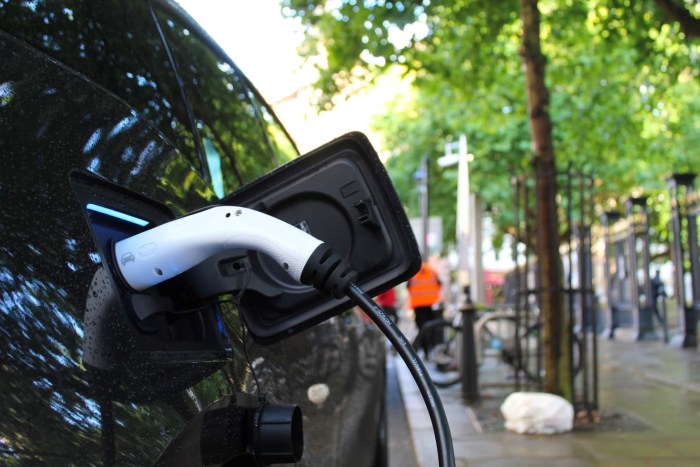Saving money is important for businesses and saving energy is important for all of us – so here is the perfect mix of both and some great tips for small businesses to save on energy. Remember, these are not the only ways you can save on your energy costs. You have to ensure that you are on the best electricity rate plan that is right for your business. Energy comparison sites like Electricityrates.com can help you find the best rates around your area to suit your business needs. All you need to do is enter your ZIP code, and you’ll get a list of electric providers in your area to choose from based on your preferences.
1. Get A Free Energy Audit
A full energy audit helps identify issues that might be causing energy wastage – these include insulation issues and air leaks. Most electricity utility companies offer these audits free of charge. The inspection not only helps you determine how energy is used but also ways to address energy wastage. The audit report will also recommend ways to keep your energy usage on the low, such as investing in energy efficient lighting and equipment.
Inquire with Josco Energy Corporation about a free audit.
2. Invest in Energy-Efficient Office Equipment
Energy efficient (energy-star rated) appliances use up less energy as compared to older non-rated ones. That said, it would be advisable for you to lease/buy energy star rated office electronics. This should help see your energy bills drop significantly, hence substantial cost savings in the long run.
3. Avoid Peak Demand
Peak demand can be defined as the time of the day when there’s a high demand for energy. These are the hours when energy usage is the highest. The typical peak hours start from 9 a.m. to 5 p.m. Reducing your demand for electricity during these times and only running the factory and heavy equipment early in the morning, and later in the evening can help reduce energy consumption. Reducing your demand for energy during peak hours also means your small business spends less on energy usage at the end of the day. Check here to learn how to start a small business.
4. Use Programmable Thermostats
Smart thermostats make it easy to monitor and control temperatures in the workplace when everyone is in the office (9 – 5), and away. The thermostat can be programmed to turn OFF the heating and cooling appliances during the night, and back ON a few minutes to ‘work hours’. This in return sees you save lots of energy that would have otherwise been wasted had the HVAC systems remained on through the night.
5. Switch Off Lights in Unused Areas
Most offices have an always-on lights setup. This means the lights in all rooms including bathrooms, conference rooms, breakrooms, and even unused corridors. This leads to energy wastage which can be preserved if lights were only turned on when needed. Installing sensors to turn the lights on or off when required could help too.
6. Switch to Energy-Efficient Light Bulbs
Incandescent bulbs use up more energy for the same amount of light when compared to CFLs and LEDs that use just a fraction of it. Switching from incandescent bulbs to CFL or LEDs should help the company use less energy in lighting. This is the simplest and easiest ways to save energy in the workplace.
7. Make Use of Natural Light
Always take advantage of the natural sunlight whenever you can. You can do so by drawing the blinds, curtains, and opening the windows to allow the sunlight in. Be sure to switch off lights in well-lit areas well. Letting the sunlight in also means you get passive heating from the sun, hence no need to have the heaters on. While it may seem like nothing, taking advantage of the natural sunlight should help save the business a few kilowatt hours a day.
8. Run Fans
Have fans installed in showrooms, warehouses, kitchens, and offices alike. The fans will help keep the air moving, hence facilitate optimal air circulation. This means the HVAC system will run more efficiently and smoothly translating to lower energy consumption.
9. Power Down Computers and Other Office Equipment When Not in Use
Having everyone power down their computers at the end of the day should help save lots of energy. You might also want to set the laptops to go to sleep or hibernate if not used for a certain number of minutes or hours. Be sure to turn off and unplug other electronic devices from the mains sockets.
Although modern toasters, coffee makers, printers, and other office appliances have a ‘sleep’ mode when not in use, these continue to draw some current if left plugged. Unplugging these will save some more kilowatts.
10. Avoid ‘Phantom’ Energy
As mentioned earlier, some equipment will continue to draw electricity when plugged in. That said, making it a habit of unplugging such devices or using a power strip on them, can help save some energy. With a power strip, a simple flip of the switch will cut electricity supply to the connected devices.
11. Make Adjustments to the Surrounding Landscape
If you have control over the landscape around, you can then use it to your advantage. Energy-efficient landscaping, such as planting trees strategically to block winds and provide shelter, will go a long way in reducing heating and cooling costs.
12. Involve the Employees
Encouraging the employees to take on energy-efficiency practices can help reduce electricity costs and energy wastage too. Train the employees to turn off their computers after work, switch off lights, as well as use energy efficient appliances in the workplace.
Inspiring them to save more energy should work well for the company. You can see more tips and tricks on how to improve employee energy-saving practices here.




























